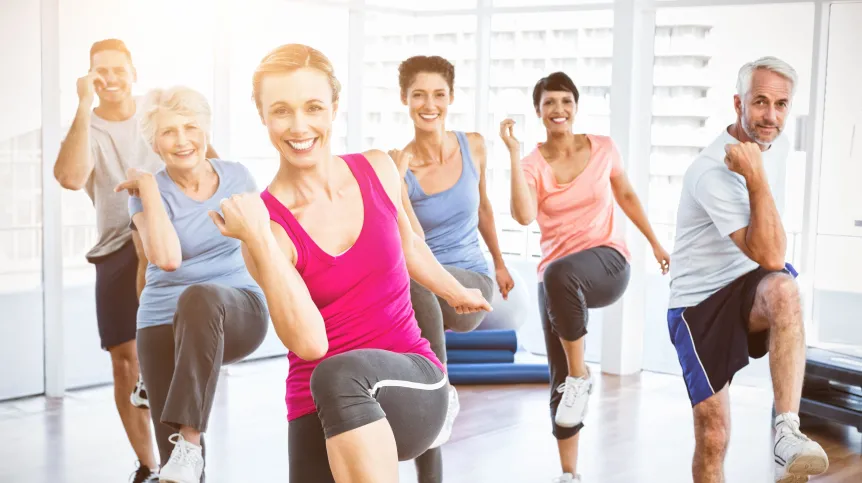
People spend an average of nearly four hours a day improving their beauty, according to a study on nearly 100,000 people from 93 countries. Among the groups that spend less time on it are men, middle-aged people, people in long-term relationships, people who avoid social media and those who consider themselves moderately attractive.
Dr. Marta Kowal from the University of Wrocław, the first author of the international publication in Evolution and Human Behavior said: “Caring for one's beauty is a widespread habit all over the world, in every culture and demographic group. As many as 99 percent of respondents declared that they spend at least 10 minutes a day taking care of their beauty. The global average was 238 minutes a day among women and 215 minutes a day among women among men.”
Respondents from all over the world - approx. 93,000 adults from 93 countries - were asked to assess how much time they spent a day on the activities indicated in the survey, the main purpose of which was - broadly speaking - improving their own beauty.
Kowal said: “If someone decided that they were doing a given activity primarily for health or relaxation, it was not counted as a beauty-enhancing activity.”
The biggest beautifying time-wasters included: physical activity (to improving the figure), following a specific diet (including preparation of special meals), body hygiene (including, for example, visits to the dentist), dressing (including buying clothes and choosing clothes every day), hair grooming (including facial hair), applying cosmetics and make-up.
In Poland, following a specific diet took a lot of time. In this case, Poland was above the world average. As for exercising, we lowered the statistics.
Dr. Kowal said: “The biggest difference between Poles and the rest of the world among all types of behaviours was clothing style. We spent much less time choosing clothes than the world average.”
AFRICA AHEAD, CENTRAL AMERICA HIGH, THE FRENCH FALLING BEHIND
She continued: “It might seem that the most beauty-conscious countries will be those highly developed - such as the USA or France. That is not the case. There, compared to other countries, the time spent on beautification was relatively short.”
She added that the record average daily time spent on improving one's appearance (sometimes even 6-8 hours) was recorded in: Tunisia, Thailand, Ghana, Nigeria, Dominican Republic, Colombia and Ecuador. In Africa and Central America, more time was usually spent on making the appearance more attractive than in Europe and North America.
She said: “Poland ranked more or less in the middle, but still at the forefront in Europe (behind Ukraine, Italy and Romania).”
Researchers looked for demographic, cultural and social factors associated with the fact that some people care more than others about their beauty.
THE WOMAN DRESSES UP, THE MAN WAITS?
Gender is one obvious factor. It turned out that women around the world spend an average of 20 minutes more on beautification than men.
In the case of Poland, this difference was 40 minutes. In Poland, women declared to spend 238 minutes a day on beauty-related activities (the same as the world average), and men 196 minutes (below the world average). 'In terms of gender differences, we were high in this comparison', the researcher comments.
WHY WOMAN CARE TO BE BEAUTIFUL
Kowal said: “To put it simply, the evolutionary explanation assumes that we care about our attractiveness in order to attract mates and pass on our genes. Women could gain more than men on taking care of their beauty. On the other hand, men who preferred attractive women were more likely to choose young partners, in reproductive age, healthy and fertile; and therefore, they probably had more offspring than men for whom physical attractiveness was not a priority.”
In the case of women, paying attention to the physical attractiveness of a partner may not have had such an evolutionarily significance.
According to Kowal: “Women are hypothesized to prioritize male cues of high status, prestige, and formidability.”
According to another explanation, cultural trends - transmitted, for example, by the media - try to squeeze us into one canon of beauty. “It is assumed that there is more pressure on women, where the ideal of beauty is so high that it becomes virtually impossible for most women to achieve. But women still often try to follow this pattern,” Kowal said.
I AM AT A BEAUTIFUL AGE
Age is another demographic factor that differentiates us in terms of the amount of time we spend beautifying ourselves.
Young people aged 18-25 usually spend the most time on beautification. At a later age, the time spent on taking care of one's beauty gradually shortens, reaching the minimum at the age of 42 for women and at 60 for men. After that, the time spent on beautification increases again. Interestingly, among people aged around 35-37, men spend more time on their appearance than women (which is the only exception here).
According to the research, beautification is so popular among young people, because, according to the evolutionary theory, they are looking for partners. In the later decades of life, when a lot of time is consumed by work, people often already have partners and children - so there is less time to take care of one's beauty. However, the opportunity to devote more time to beautification returns in the following decades. Then - the psychologist comments - children are often raised, there is less work, and more and more free time. Another thing is how time affects the body. With age, the appearance deviates more and more from the canons of beauty. So, people who want to look attractive often spend more and more time on it.
IN CONNECTION WITH BEAUTY
Relationship status is also important. It might seem that singles spend the most time striving for a beautiful appearance. Meanwhile, research has shown that people who are dating, and therefore are in the early stages of forming relationships, spend significantly more time on this. The time taken to take care of beauty decreases in married people and those in stable relationships.
LOOK WELL ON SOCIALS
The researchers also looked for factors that would best predict how much time a person would spend on their appearance.
The strongest correlation was the amount of time spent on social media. The more someone spent on Instagram, Tinder, TikTok, Facebook, Twitter, the more likely they were to spend a lot of time in beauty-related activities as well.
Kowal said: “It may be tempting to conclude that if we are exposed to a lot of social media content, we pay more attention to whether someone is attractive and then we care more about our own beauty. But must remember that the reverse relationship may be true: the people who pay the most attention to their beauty feel a greater need to spend more time on social media. Our research does not determine which explanation is closer to the truth.”
BEAUTY AND CARE FOR BEAUTY
The researchers also studied how the perception of one's beauty affects the time spent on improving it. It turned out that people who perceived themselves as extremely attractive, devoted the most time to be even more beautiful. People who considered themselves to be very unattractive also spent a lot of time on improving their attractiveness. People who placed themselves in the middle of the beauty scale spent the least time on their appearance.
Another very important factor was how the roles of women and men were perceived in a given society. In countries where women's roles were perceived in a traditional way, residents devoted more time to beauty-related activities than in countries where this approach was not common.
Kowal added: “Interestingly - it concerned the time both women and men devoted to beauty.”
This result could therefore partly explain why the citizens of the USA and France spend less time on their appearance than the inhabitants of Central American countries.
“While there is a cultural notion that people should not be judged by their appearance, it turns out that we spend a lot of time every day ensuring that other people to judge our appearance well. It is worth considering how much time we devote to becoming more beautiful. And whether it is really the amount of time we want to spend on it,” Kowal said.
The study was financed with the Preludium grant of the Polish National Science Centre.
PAP - Science in Poland, Ludwika Tomala
lt/ bar/ kap/
tr. RL













